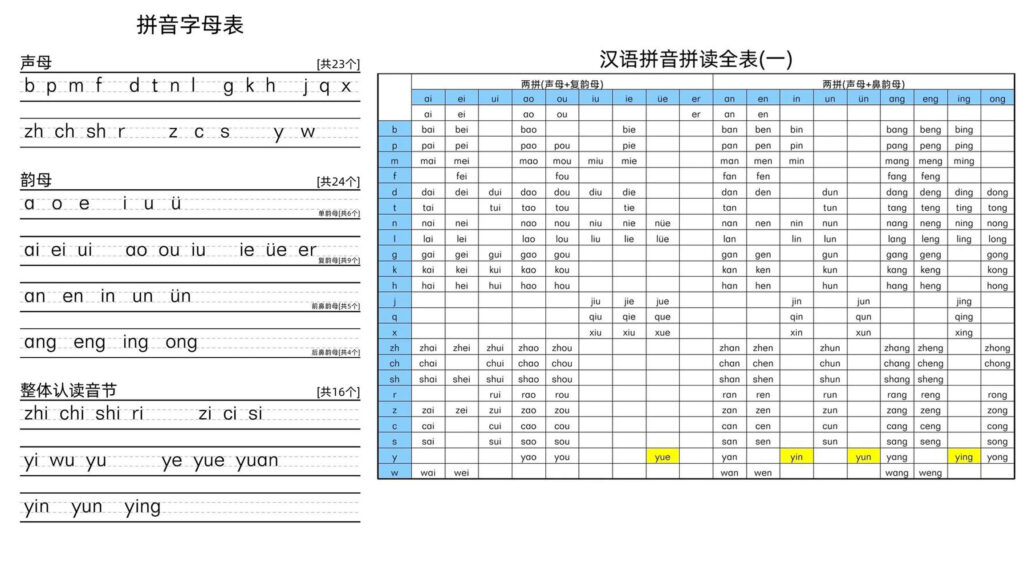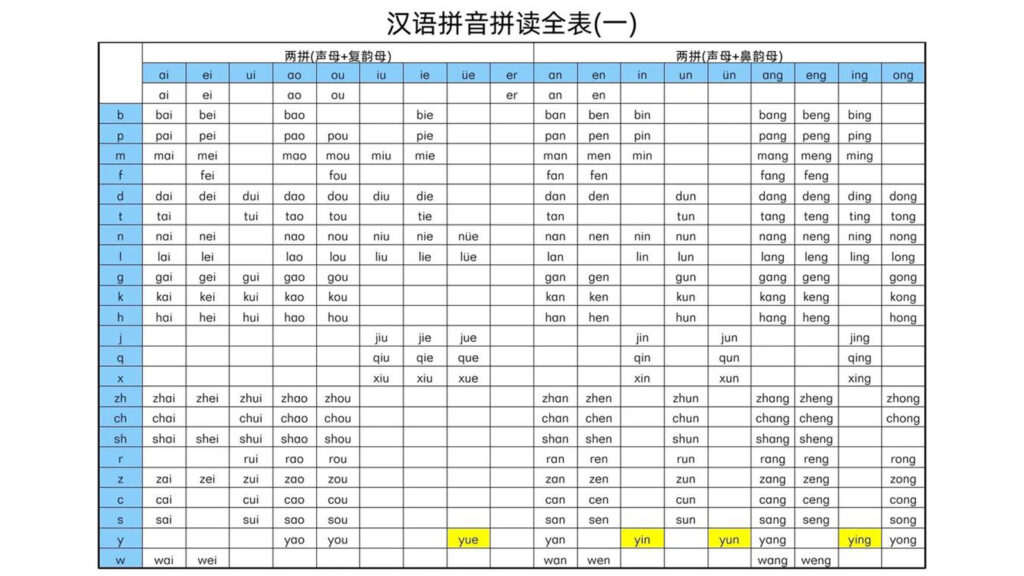I’d like to say that learning the pronunciation of Chinese characters, namely pinyin, is actually quite simple, provided that one masters the secrets of learning it. If you can read English words’ phonetic symbols, you can read Chinese Pinyin as well. As we all know, the pronunciation of English words is formed by vowels or a combination of consonants and vowels. Similarly, the pronunciation of Chinese characters, which we refer to as pinyin, is constructed by finals or a combination of initials and finals. From a phonological perspective, we can observe that the finals in Chinese pinyin are analogous to the vowels in English word pronunciation, while the initials in Chinese pinyin correspond to the consonants in English word pronunciation.
Certainly, let’s illustrate this concept with some examples:
English Word Pronunciation
Vowels: In English, vowels are the sounds made by the free passage of breath through the mouth, without any obstruction from the throat. For example, in the word “apple” (ˈæpəl), the vowel sound is “æ”.
Similar in Chinese Pinyin: The vowel sounds in Chinese pinyin are represented by the finals. For instance, in the pinyin “mā” (妈), the vowel sound is “a”, which is similar to the vowel “æ” in English.
Consonants: Consonants in English are sounds made by obstructing the flow of breath in some way. For instance, in the word “cat” (kæt), the consonant sounds are “k” and “t”.
Similar in Chinese Pinyin: The consonant sounds in Chinese pinyin are represented by the initials. Take the pinyin “míng” (明) as an example, the consonant sound “m” is similar to the consonant “m” in English.
Comparison between Chinese Pinyin and English Word Pronunciation
Vowel vs. Final: The vowel sounds in English correspond to the finals in Chinese pinyin. Both represent vowel sounds in their respective languages.
Consonant vs. Initial: The consonant sounds in English correspond to the initials in Chinese pinyin. Both represent consonant sounds in their respective languages.
Examples of Combinations
In English, a vowel and consonant(s) can combine to form a syllable, such as “cat” (kæt).
Similarly, in Chinese pinyin, an initial and final can combine to form a syllable, such as “míng” (明).

In summary, while English and Chinese use different alphabets and phonological systems, there are parallels between their vowel/final and consonant/initial sounds. Understanding these parallels can help learners make connections and facilitate language learning.

